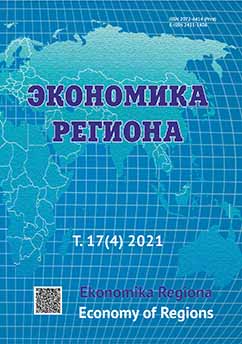Динамическая модель прогнозирования научной миграции в регионе
A Dynamic Forecasting Model for Scientific Migration in the Region
Author(s): Anastasiya Yevgenyevna Sudakova, Aleksandr Aleksandrovich Tarasyev, Daniil Gennadyevich SandlerSubject(s): Economy, Geography, Regional studies
Published by: Институт экономики Уральского отделения Российской академии наук
Keywords: migration of scientists; mobility; migration; brain drain; pull and push factors; dynamic modeling; forecasting of scientific migration; game theory
Summary/Abstract: The population migration has attracted attention for more than a decade. As migration consequences differ in terms of characteristics and directions, governments worldwide are looking for solutions to regulate migration flows. The study aims to systematise push-pull factors of migration by analysing existing cases, as well as to build a model for predicting migration considering the quantitative interpretation of such factors. While migration factors are quite similar regardless of the country of residence, their main differences are compatibility and hierarchy. The most frequently mentioned factors include the expectation of income increase, improvement in the quality of life, professional aspects. Simultaneously, a certain pattern emerges: if a migrant’s material and economic needs are satisfied in the country of departure, they pay more attention to intangible/non-economic benefits (quality of life, infrastructure, etc.). A dynamic forecasting model for scientific migration has been developed based on the theory of positional games. The model demonstrates the changes in migration flows by describing the behaviour of a rational individual who seeks to maximise benefits from migration. The result of the simulation is a short-term forecast of trends in scientific migration of Ural scholars to key migration countries. The model predicts the intensification of migration flows to the leading Asian countries, their alignment with flows to America, and a decrease in migration to European countries. This forecast is characterised by a direct dependence of the dynamics of scientific migration flows on the socio-economic development of migration destinations. Practical implications of this study include the development of a predictive model describing migration flows in the short term as an analytical tool and systematisation of pull-push factors as key indicators for managing the migration flows of scientists. In addition, the research proposes measures positively affecting the balance of scientific migration.
Journal: Экономика региона
- Issue Year: 17/2021
- Issue No: 4
- Page Range: 1196-1209
- Page Count: 14
- Language: Russian

